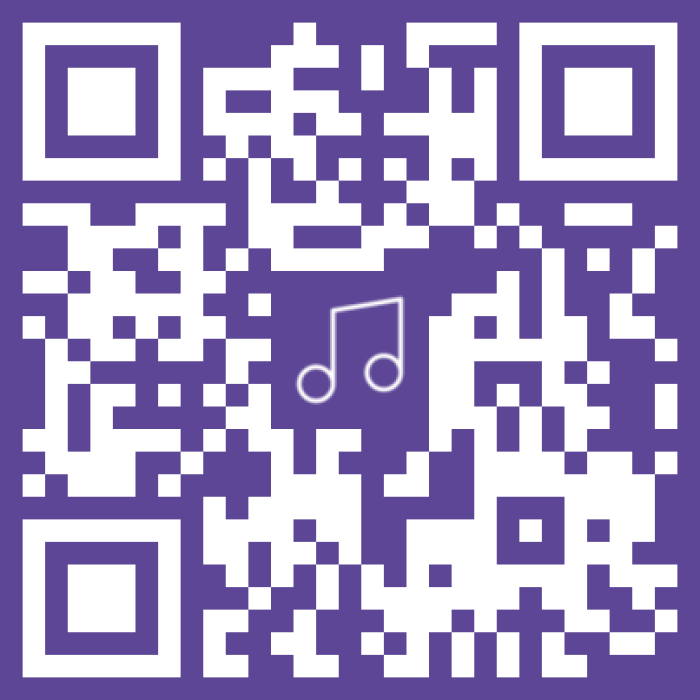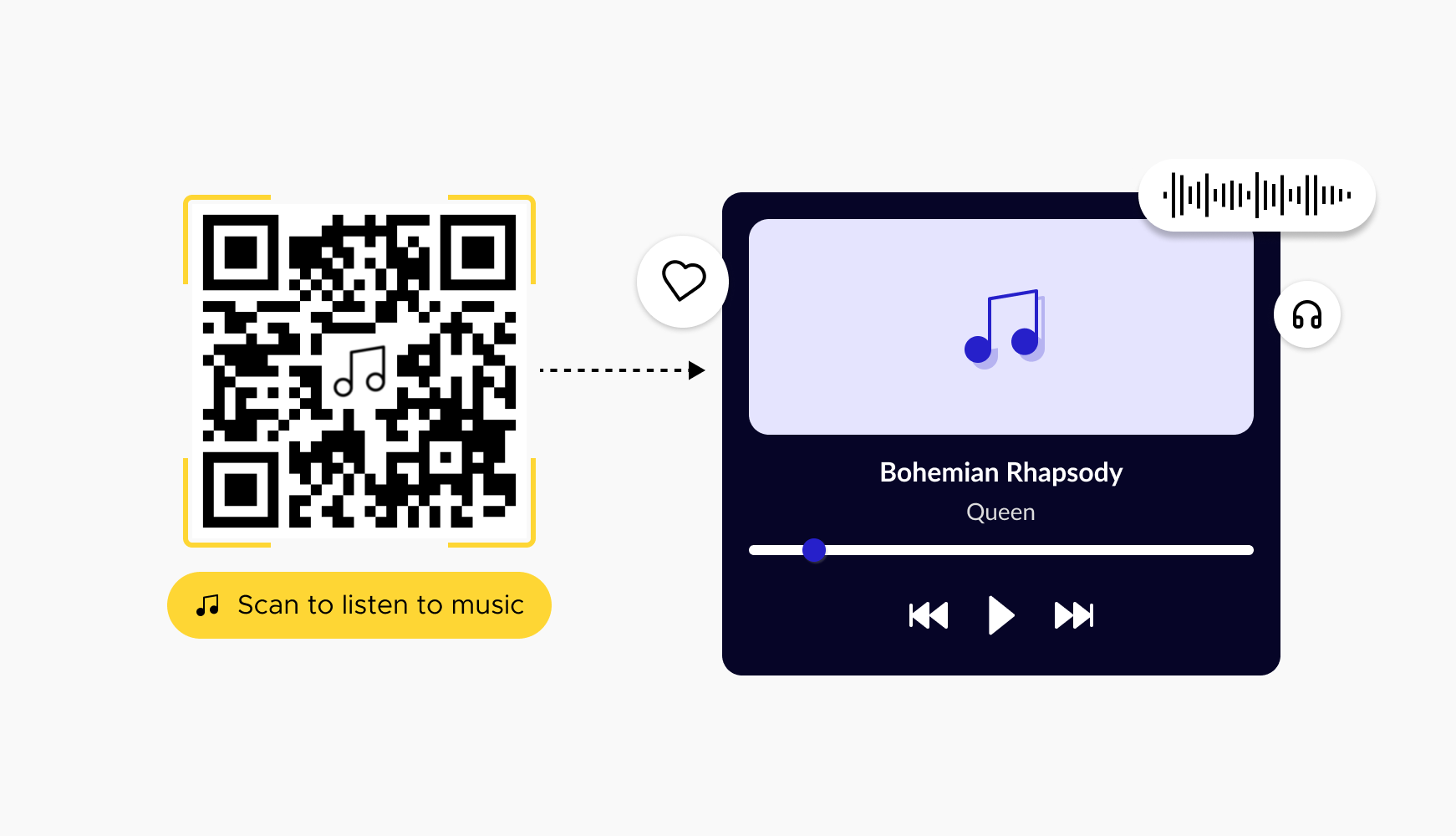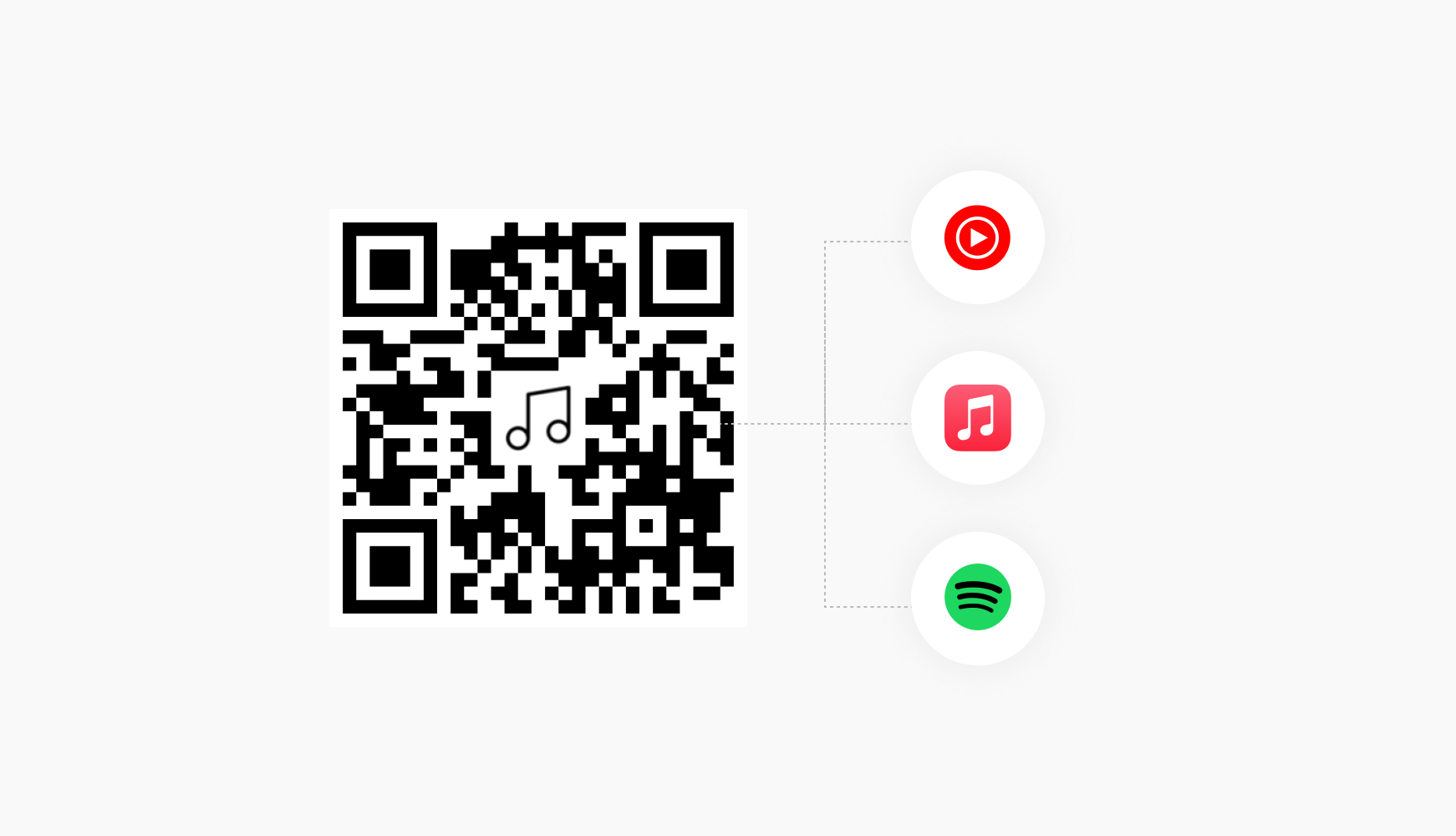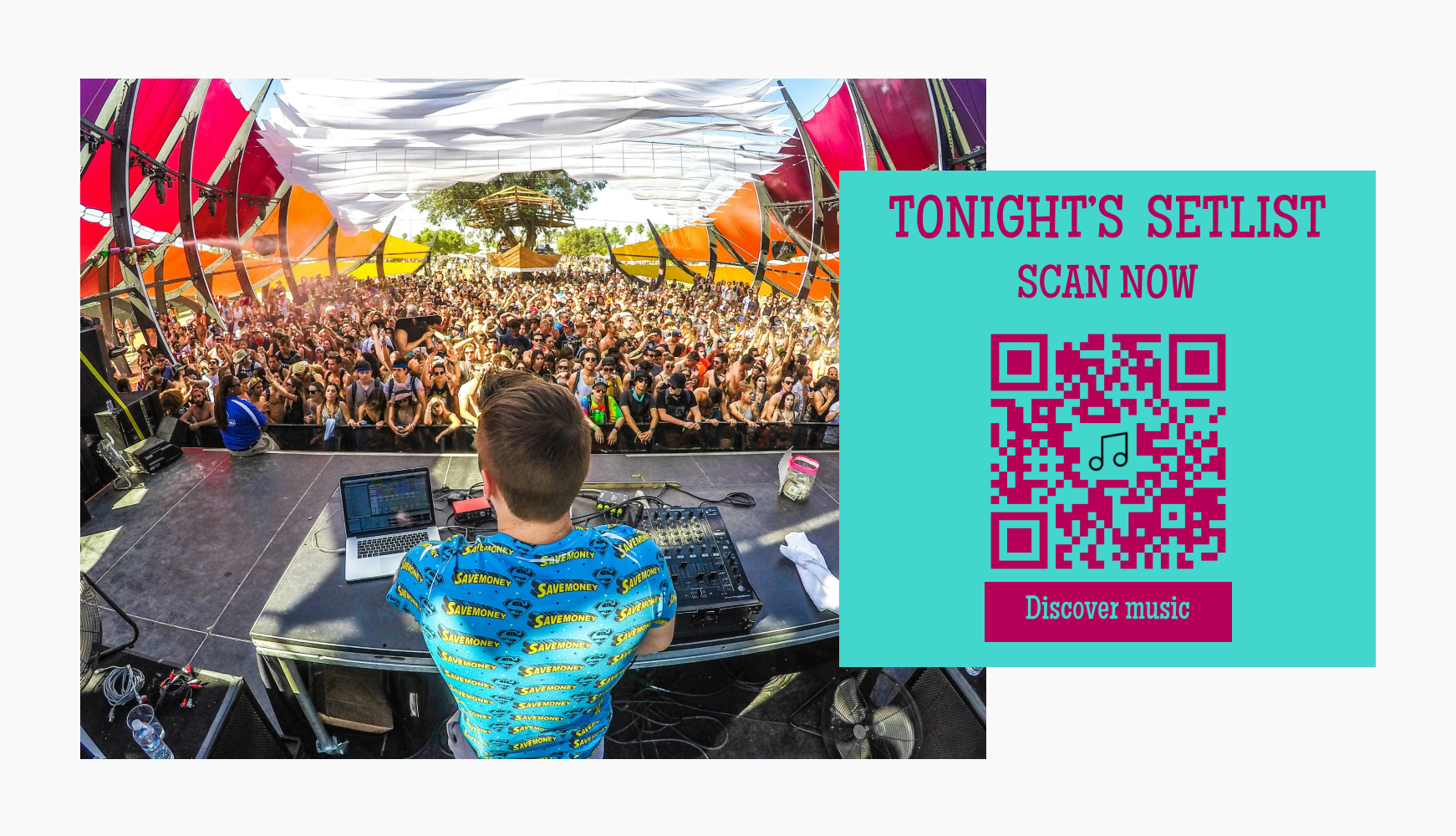Struggling to share your favorite music quickly? In today's digital age, traditional methods like links or physical media often create barriers. Music QR codes change this by allowing instant access to songs, albums, or playlists with a simple scan, connecting artists and listeners seamlessly.
Music QR codes are a powerful tool for promoting new releases or sharing music finds. Let's explore how they can transform your musical experience.


Music QR codes provide a seamless way to access songs, albums, or playlists instantly. When users scan the QR code, they are taken directly to the specified music content without the need to manually search for it. This eliminates the hassle of typing out song names or artist details, ensuring that the listener's experience is smooth and enjoyable. For artists, this means their music is more accessible to fans, increasing the likelihood of plays and shares. Additionally, for promotional materials, such as posters or flyers, incorporating a music QR code ensures that potential listeners can instantly engage with the music being promoted, leading to higher conversion rates and a more connected audience.
QR codes embedded in promotional materials like posters, flyers, or social media posts significantly boost music promotion efforts. Artists and promoters can link these QR codes to new releases, music videos, or exclusive content, making it easier for audiences to discover and share the music. This method of promotion is particularly effective because it allows for a direct and immediate connection between the artist and the listener. Instead of relying on users to find the music themselves, QR codes facilitate an instant connection, increasing engagement and reach. Moreover, this direct approach can lead to higher streaming numbers and more effective word-of-mouth marketing, as listeners are more likely to share easily accessible music.

QR codes offer a direct link to music on popular streaming platforms like Spotify, Apple Music, or YouTube, streamlining the process for users to listen to and share music. When a user scans a QR code, they are immediately directed to the track or playlist on their preferred streaming service, eliminating the need for searching. This seamless integration makes it easier for artists to share their music with a broader audience and ensures that listeners can quickly and conveniently access the content. For marketing campaigns, this direct approach increases the likelihood of engagement and sharing, as it reduces barriers to accessing the music. Additionally, it helps in tracking the effectiveness of promotional efforts, as the number of scans can be monitored and analyzed.
At concerts and music festivals, QR codes can significantly enhance attendee engagement. By placing QR codes throughout the venue or on event materials, organizers can provide instant access to event information, setlists, or even live streams. This enhances the overall experience by making it easy for attendees to stay informed and connected. For example, a QR code on a concert ticket could link to a detailed schedule, artist bios, or exclusive backstage content. Additionally, QR codes can be used for interactive elements like voting for encore songs or accessing special offers. This interactive approach not only enriches the event experience but also encourages attendees to participate more actively, creating a more dynamic and memorable event.
Ready to discover how QR codes can transform your business?
Start by creating your custom QR Code today

Promoters can significantly enhance concert promotions by incorporating QR codes into posters, tickets, and other marketing materials. When scanned, these QR codes can link directly to the artist’s latest album, upcoming tour dates, or even exclusive pre-show content. This makes it easy for fans to access important information and stay updated on their favorite artists. Additionally, QR codes can provide direct access to ticket purchasing platforms, streamlining the buying process. By reducing the steps needed to find concert details or buy tickets, QR codes increase the likelihood of ticket sales and attendance. This direct link between promotional materials and actionable content ensures that fans are always connected and informed, creating a more efficient and engaging promotional strategy.
Artists can add a modern twist to traditional album releases by including QR codes in their physical albums. These QR codes can direct listeners to a digital version of the album, providing a convenient way to access the music on multiple devices. Additionally, QR codes can unlock bonus content, such as exclusive tracks, music videos, or behind-the-scenes footage, offering fans added value. They can also link to merchandise stores, encouraging fans to purchase related items. This approach not only enhances the physical album experience but also bridges the gap between physical and digital music consumption. By offering easy access to additional content, artists can create a more immersive and engaging experience for their listeners, fostering a stronger connection with their audience.
Radio stations can leverage QR codes to enhance their listener engagement and reach. Placing QR codes on station flyers, advertisements, or during broadcasts can direct listeners to playlists, song requests, or live streams of the broadcast. This provides a seamless way for listeners to interact with the station and access their favorite content. For example, a QR code on a promotional flyer could link to a curated playlist of the station’s top songs or upcoming show schedules. During broadcasts, QR codes can enable listeners to request songs or participate in polls and contests, making the listening experience more interactive. This use of QR codes helps radio stations stay connected with their audience, offering multiple ways for listeners to engage with their content.

DJs can enhance their performances and connect with their audience by sharing their setlists via QR codes at events. When attendees scan these QR codes, they can easily find and follow the music played during the performance on their preferred streaming platforms. This not only allows fans to relive the experience but also helps them discover new music introduced by the DJ. Additionally, QR codes can link to the DJ’s social media profiles, upcoming event dates, or exclusive mixes, fostering a deeper connection with the audience. This approach not only makes the event more memorable but also helps DJs build their fan base and increase their visibility. By providing a direct link to their music and social platforms, DJs can ensure that their audience stays engaged and connected long after the event ends.
Select a reliable QR code generator like QRStuff, which offers a range of features to create dynamic and customizable QR codes suited for your business needs.
Ready to discover how QR codes can transform your business?
Start by creating your custom QR Code today
Select the appropriate type of QR code for your needs. Pick the URL type to direct users to your music.

Add customization to your QR code, such as your server's logo, colors, or other branding elements, to make it visually appealing and recognizable.

Before distributing your QR code, test it with multiple devices to ensure it directs to the intended place.

Print your QR code on various materials, such as business cards, posters, flyers, or merchandise, to make it easily accessible to your target audience.

Use QRStuff’s dashboard to track the performance of your QR codes. Collect feedback and measure the success of each code, allowing you to optimize their use and improve customer engagement.

The quality of your QR code is paramount to its functionality. Always use high-resolution images for your QR codes to ensure they are clear and easy to scan. Avoid placing QR codes on surfaces that can distort or pixelate the image, such as curved or textured surfaces. Make sure the QR code is not too small or too large, as both can affect scannability. A good rule of thumb is to test the QR code at the intended size and placement before printing or distributing it. By ensuring high-quality scannability, you reduce the risk of users encountering errors, which can lead to frustration and lower engagement rates.
To maximize the effectiveness of your music QR code, ensure it directs users to current and relevant content. Whether you’re linking to a new release, an upcoming event, or a curated playlist, the content should be valuable and timely for your audience. Outdated or irrelevant content can disappoint users and decrease the likelihood of future engagement. Regularly review and update the linked content to keep it fresh and engaging. This practice not only enhances user satisfaction but also keeps your audience interested and coming back for more. Relevant content is key to maintaining a positive user experience and achieving your promotional goals.
The placement of your QR code plays a significant role in its visibility and the number of scans it receives. Ensure that the QR code is positioned prominently on your promotional materials, whether they are posters, flyers, merchandise, or digital platforms. It should be easily noticeable and accessible for scanning. Avoid placing QR codes in areas where they might be obscured or overlooked, such as the bottom corners or edges. Instead, consider placing them at eye level or in the center of your materials where they are more likely to attract attention. Prominent placement maximizes engagement and ensures that your QR codes effectively reach your audience.
If you’re using a dynamic QR code, take advantage of the ability to update the linked content regularly. This feature allows you to keep the QR code relevant without the need to reprint or redistribute it. For example, you can update the QR code to link to new music releases, upcoming events, or special promotions. Regular updates keep your audience engaged and provide them with fresh, valuable content. Additionally, this practice helps maintain the interest of repeat users, who will appreciate the new and current information. By regularly updating your QR code content, you ensure it remains a useful and appealing tool for your audience.
Yes, you can create Music QR codes using our free QR code generator. For some QR Code types, our free version supports basic QR code creation. For advanced features, such as branding or analytics, a subscription is required.
A subscription unlocks advanced features tailored to Music QR Codes, including dynamic QR codes for real-time updates, detailed scan analytics to track user engagement, and customization tools to align QR codes with your branding. These features enhance functionality, improve user experiences, and streamline your workflows. See the full list of features associated with each subscription here.
You can reach out to us at support@qrstuff.com for assistance. Free users receive email support with responses typically provided within 12–24 hours. Subscribers enjoy priority support via email, phone, or live chat for faster resolutions. To help us assist you efficiently, please include your account details, QR code ID, and a brief description of the issue when contacting support.